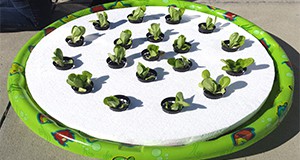 School gardens are a great way to get youth interested in where their food comes from. Hydroponics, or the cultivation of plants in liquid nutrient solutions rather than in soil, is a fascinating way to teach students about food systems. This 4-page fact sheet lists the materials, tools, and construction steps needed to grow a variety of crops in a wading pool hydroponic garden. Written by Edmund L. Thralls, and published by the UF Department of Environmental Horticulture, October 2015.
School gardens are a great way to get youth interested in where their food comes from. Hydroponics, or the cultivation of plants in liquid nutrient solutions rather than in soil, is a fascinating way to teach students about food systems. This 4-page fact sheet lists the materials, tools, and construction steps needed to grow a variety of crops in a wading pool hydroponic garden. Written by Edmund L. Thralls, and published by the UF Department of Environmental Horticulture, October 2015.
http://edis.ifas.ufl.edu/ep525
Category: Getting Involved
What Else Can Surface Water Buffer Systems Do?: Exploring Multiple Ecosystem Services
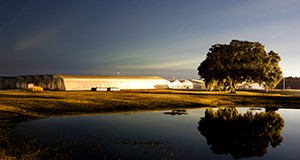 As society confronts the consequences of global warming, deteriorating water quality, and impoverished biodiversity, there is a growing urgency to develop and expand water buffers' multifunctional ecosystem services. However, limited information is available on other potential co-benefits associated with the use of buffers, particularly VFSs. This 5-page fact sheet provides information on buffers' multiple ecosystem benefits, such as niche products production, carbon sequestration, and flood risk mitigation, as well as recommendations on future research needs necessary to enhance multiple ecosystem services and benefits of buffers. Written by Lei Wu, Rafael Muñoz-Carpena, and Yuncong Li, and published by the UF Department of Soil and Water Science, November 2015.
As society confronts the consequences of global warming, deteriorating water quality, and impoverished biodiversity, there is a growing urgency to develop and expand water buffers' multifunctional ecosystem services. However, limited information is available on other potential co-benefits associated with the use of buffers, particularly VFSs. This 5-page fact sheet provides information on buffers' multiple ecosystem benefits, such as niche products production, carbon sequestration, and flood risk mitigation, as well as recommendations on future research needs necessary to enhance multiple ecosystem services and benefits of buffers. Written by Lei Wu, Rafael Muñoz-Carpena, and Yuncong Li, and published by the UF Department of Soil and Water Science, November 2015.
http://edis.ifas.ufl.edu/ss647
Contaminants in the Urban Environment: Dioxins
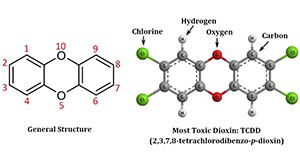 Dioxins are among the most toxic chemicals on the earth. They are by-products of a number of human activities such as combustion of fuels and wastes containing polyvinyl chloride (PVC), chlorine bleaching of paper products, and selected industrial processes. Current releases of dioxins by humans are due to the combustion of fuels and burning of household trash. The good news is that levels of dioxins in the environment have decreased in the United States throughout the past 30 years due to the improved emission controls and regulatory activities. But dioxins break down slowly, so they remain in the environment for a long time and accumulate in the food chain. Long-term exposure to dioxins can harm immune system, nervous system, endocrine system, and reproductive functions. This 7-page fact sheet discusses the sources, emission trends, and impacts of dioxins as well as the ways to minimize exposure to dioxins. Written by Yun-Ya Yang and Gurpal S. Toor, and published by the UF Department of Soil and Water Science, July 2015.
Dioxins are among the most toxic chemicals on the earth. They are by-products of a number of human activities such as combustion of fuels and wastes containing polyvinyl chloride (PVC), chlorine bleaching of paper products, and selected industrial processes. Current releases of dioxins by humans are due to the combustion of fuels and burning of household trash. The good news is that levels of dioxins in the environment have decreased in the United States throughout the past 30 years due to the improved emission controls and regulatory activities. But dioxins break down slowly, so they remain in the environment for a long time and accumulate in the food chain. Long-term exposure to dioxins can harm immune system, nervous system, endocrine system, and reproductive functions. This 7-page fact sheet discusses the sources, emission trends, and impacts of dioxins as well as the ways to minimize exposure to dioxins. Written by Yun-Ya Yang and Gurpal S. Toor, and published by the UF Department of Soil and Water Science, July 2015.
http://edis.ifas.ufl.edu/ss642
Conservation Easements: Options for Preserving Current Land Uses
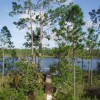 Conservation easements are cost-effective means for government agencies or non-government conservation organizations to protect land. Instead of purchasing land outright, these agreements allow organizations to purchase the development rights of a property. This protects the land and saving money. Landowners who choose this option prevent future residential and commercial development of their land, and reduce the amount of inheritance tax liability. Landowners are encouraged to enter such agreements carefully because they require several rights to be conveyed to the easement grantee and the duration of these agreements is typically perpetual. This 5-page fact sheet describes conservation easements, what is involved in establishing one, tax implications, participating government and non-government organizations, and important considerations for landowners. Written by Chris Demers and Douglas R. Carter, and published by the UF Department of School of Forest Resources and Conservation, March 2014.
Conservation easements are cost-effective means for government agencies or non-government conservation organizations to protect land. Instead of purchasing land outright, these agreements allow organizations to purchase the development rights of a property. This protects the land and saving money. Landowners who choose this option prevent future residential and commercial development of their land, and reduce the amount of inheritance tax liability. Landowners are encouraged to enter such agreements carefully because they require several rights to be conveyed to the easement grantee and the duration of these agreements is typically perpetual. This 5-page fact sheet describes conservation easements, what is involved in establishing one, tax implications, participating government and non-government organizations, and important considerations for landowners. Written by Chris Demers and Douglas R. Carter, and published by the UF Department of School of Forest Resources and Conservation, March 2014.
http://edis.ifas.ufl.edu/fr149
Valuing the Recreation Uses of Natural Resources: The Travel Cost Method
 Many available statistics provide evidence that outdoor recreation in Florida generates economic value, but these data do not capture the full recreation value of Florida’s natural resources. The Travel Cost Method (TCM) approach may be applied in cost-benefit analysis and in natural resource damage assessments where recreation values are relevant. This 8-page fact sheet summarizes and synthesizes economic texts on TCM and provides an overview of a case study in which the TCM was used to estimate the nature-based recreation use value of the Apalachicola River Region in Florida. Written by Elizabeth F. Pienaar, and published by the UF Department of Wildlife Ecology and Conservation, January 2014.
Many available statistics provide evidence that outdoor recreation in Florida generates economic value, but these data do not capture the full recreation value of Florida’s natural resources. The Travel Cost Method (TCM) approach may be applied in cost-benefit analysis and in natural resource damage assessments where recreation values are relevant. This 8-page fact sheet summarizes and synthesizes economic texts on TCM and provides an overview of a case study in which the TCM was used to estimate the nature-based recreation use value of the Apalachicola River Region in Florida. Written by Elizabeth F. Pienaar, and published by the UF Department of Wildlife Ecology and Conservation, January 2014.
http://edis.ifas.ufl.edu/uw386
Improving Behavioral Outcomes in Extension Using the Tools of Community-Based Social Marketing (CBSM)
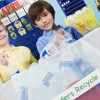 There is increasing evidence that, with the right approach, people can be encouraged to change. From recycling, composting, and picking up pet waste to saving water, the public is adopting new behaviors and giving up old ones. The tools to do this can be found in Community Based Social Marketing (CBSM). This 6-page fact sheet was written by Paul Monaghan and Martha Monroe, and published by the UF Department of Agricultural Education and Communication, September 2013.
There is increasing evidence that, with the right approach, people can be encouraged to change. From recycling, composting, and picking up pet waste to saving water, the public is adopting new behaviors and giving up old ones. The tools to do this can be found in Community Based Social Marketing (CBSM). This 6-page fact sheet was written by Paul Monaghan and Martha Monroe, and published by the UF Department of Agricultural Education and Communication, September 2013.
http://edis.ifas.ufl.edu/wc149
Conserving Urban Wildlife in the Face of Climate Change
 Virtually all climatologists agree that humans are increasing the rate of the Earth’s warming by releasing greenhouse gases into the atmosphere. But you might be surprised to learn that houses and residential neighborhoods are sources greenhouse gases of carbon because everything in a house that runs on electricity or gas is often derived from burning fossil fuels. This 4-page fact sheet describes the connections between climate change, wildlife, and human neighborhoods and presents several ways for residents to live more sustainably. Written by Daniel Feinberg and Mark Hostetler, and published by the UF Department of Wildlife Ecology and Conservation, September 2013.
Virtually all climatologists agree that humans are increasing the rate of the Earth’s warming by releasing greenhouse gases into the atmosphere. But you might be surprised to learn that houses and residential neighborhoods are sources greenhouse gases of carbon because everything in a house that runs on electricity or gas is often derived from burning fossil fuels. This 4-page fact sheet describes the connections between climate change, wildlife, and human neighborhoods and presents several ways for residents to live more sustainably. Written by Daniel Feinberg and Mark Hostetler, and published by the UF Department of Wildlife Ecology and Conservation, September 2013.
http://edis.ifas.ufl.edu/uw381
Environmental Education Resources from Federal and State Agencies (FOR100/FR128)
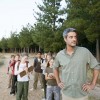 Going on a field trip? Want a spiffy new poster? Looking for a guest speaker? Or do you just need to know more about wildland fire, endangered species, coastal management, or invasive exotics? Many agencies are available to provide information, share resources, support field trips, and contribute to your environmental education programming. This 8-page fact sheet explores federal and state agencies in Florida with major educational resources. Written by Martha C. Monroe and Alison W. Bowers, and published by the UF Department of School of Forest Resources and Conservation, December 2012.
Going on a field trip? Want a spiffy new poster? Looking for a guest speaker? Or do you just need to know more about wildland fire, endangered species, coastal management, or invasive exotics? Many agencies are available to provide information, share resources, support field trips, and contribute to your environmental education programming. This 8-page fact sheet explores federal and state agencies in Florida with major educational resources. Written by Martha C. Monroe and Alison W. Bowers, and published by the UF Department of School of Forest Resources and Conservation, December 2012.
http://edis.ifas.ufl.edu/fr128
Beyond the Trees: A Systems Approach to Understanding Forest Health in the Southeastern United States (FOR287/FR355)
 Forest health is an important topic for biology, agriculture, current issues, and environmental science classes. But conversations with educators suggested that they were not equipped to teach about it given their existing curricula. This 79-page educator guide includes six activities designed to help learners consider forest health from various viewpoints; understand interrelationships and feedback mechanisms in a forest system; visualize spatial and temporal mechanisms of forest system functions; appreciate the variety of threats to forest health; and consider their role as future forest stewards. Written by Geetha S. Iyer, Martha M. Monroe and Jason A. Smith, and published by the UF Department of School of Forest Resources and Conservation, July 2011.
Forest health is an important topic for biology, agriculture, current issues, and environmental science classes. But conversations with educators suggested that they were not equipped to teach about it given their existing curricula. This 79-page educator guide includes six activities designed to help learners consider forest health from various viewpoints; understand interrelationships and feedback mechanisms in a forest system; visualize spatial and temporal mechanisms of forest system functions; appreciate the variety of threats to forest health; and consider their role as future forest stewards. Written by Geetha S. Iyer, Martha M. Monroe and Jason A. Smith, and published by the UF Department of School of Forest Resources and Conservation, July 2011.
http://edis.ifas.ufl.edu/fr355
Forest Resource Information on the Internet: Connecting to Today’s On-line Resources (FOR124/FR182)
 The original 1997 version of this fact sheet provided detailed information about the Internet: its history, structure, and how to use it. It also provided a sample of forest resource websites. This is a third version of this fact sheet, providing updated information on the latest landowner assistance websites available. These state, regional, and national resources can serve as a springboard to a wide variety of natural resource information and programs. Written by Chris Demers and published by the UF Department of School of Forest Resources and Conservation, May 2011.
The original 1997 version of this fact sheet provided detailed information about the Internet: its history, structure, and how to use it. It also provided a sample of forest resource websites. This is a third version of this fact sheet, providing updated information on the latest landowner assistance websites available. These state, regional, and national resources can serve as a springboard to a wide variety of natural resource information and programs. Written by Chris Demers and published by the UF Department of School of Forest Resources and Conservation, May 2011.
http://edis.ifas.ufl.edu/fr182
Checklist of Birds of the Everglades Agricultural Area (CIR1444/UW179)
This revised 10-page fact sheet features a checklist of bird species that have been found during eight years of surveys in the Everglades Agricultural Area. Most birds can be associated with a specific habitat such as sugarcane, sod, rice or flooded fields and other agricultural and human-inhabited areas. Written by Elise V. Pearlstine and Frank J. Mazzotti, and published by the UF Department of Wildlife Ecology and Conservation, November 2010.
http://edis.ifas.ufl.edu/uw179
Conservation Easements: Options for Preserving Current Land Uses (SSFOR21/FR149)
Many landowners have a strong connection to their land and want to ensure its protection for many generations. Conservation easements can prevent future residential and commercial development of one’s land, and reduce inheritance tax liability for one’s heirs. This 6-page fact sheet will describe conservation easements, what is involved in establishing one, some of the tax implications of such agreements, the government and non-government organizations that commonly participate in conservation easements, and important considerations for landowners before entering into such an agreement. Written by Chris Demers and Douglas R. Carter, and published by the UF School of Forest Resources and Conservation, March 2011.
http://edis.ifas.ufl.edu/fr149
Evaluating Certified Coffee Programs (WEC306/UW351)
In recent years, there has been a growing interest among consumers to buy products that follow strict standards in their production process and that also are healthy and safe. In the case of coffee, people in the United States are not only interested in the quality and origin of coffee, but many are also concerned about the social, economic, and environmental aspects of coffee production. Coffee is taking the lead in developing standards to address these concerns. This 6-page fact sheet explains the certification process and describe the various certification programs and what they mean. Written by Gloria M. Lentijo and Mark Hostetler, and published by the UF Department of Wildlife Ecology and Conservation, February 2011.
http://edis.ifas.ufl.edu/uw351
WEC294/UW339 Possible Florida Invader: Reticulated Python
WEC294, a 2-page illustrated fact sheet by Steve Johnson and Monica McGarrity, describes this native to southeastern Asia which has been found in the wild but is not established in Florida, how to identify and report sightings. Published by the UF Department of Wildlife Ecology and Conservation, November 2010.
http://edis.ifas.ufl.edu/uw339
WEC293/UW338 Florida Invader: Nile Monitor Lizard
WEC293, a 2-page illustrated fact sheet by Steve Johnson and Monica McGarrity, describes this native to sub-Saharan Africa with isolated populations in Broward and Miami-Dade Counties, with information on how to identify them and report sightings. Published by the UF Department of Wildlife Ecology and Conservation, November 2010.
http://edis.ifas.ufl.edu/uw338
WEC291/UW336 Nonnative Reptiles in South Florida: Identification Guide
WEC291, a 3-page illustrated fact sheet by Laura M. Early, Christy A. Harry, Rebecca G. Harvey, and Frank J. Mazzotti, provides color-coded visual reference and details for identification of non-native lizards and snakes and their native look-alikes. Published by the UF Department of Wildlife Ecology and Conservation, August 2010.
http://edis.ifas.ufl.edu/uw336
WEC290/UW335 Possible Florida Invader: Yellow Anaconda
WEC290, a 2-page illustrated fact sheet by Steve Johnson and Monica McGarrity, is part of the Florida Invaders series. It provides key information and illustrations for identifying and reporting sightings of this large nocturnal predator that is native to tropical South America and is not established in Florida, but escaped or released pets have been encountered in the wild. Published by the UF Department of Wildlife Ecology and Conservation, August 2010.
http://edis.ifas.ufl.edu/uw335
WEC289/UW334 Possible Florida Invader: Green Anaconda
WEC289, a 2-page illustrated fact sheet by Steve Johnson and Monica McGarrity, is part of the Florida Invaders series. It provides key information and illustrations for identifying and reporting sightings of this large nocturnal predator that is native to tropical South America and is not established in Florida, but escaped or released pets have been encountered in the wild. Published by the UF Department of Wildlife Ecology and Conservation, August 2010.
http://edis.ifas.ufl.edu/uw334
WEC288/UW333 Florida Invader: Burmese Python
WEC288, a 2-page illustrated fact sheet by Steve Johnson and Monica McGarrity, is part of the Florida Invaders series. It provides key information and illustrations for identifying and reporting sightings of this large nocturnal predator that is native to Southeast Asia and is now established and breeding in Florida and Puerto Rico. Published by the UF Department of Wildlife Ecology and Conservation, August 2010.
http://edis.ifas.ufl.edu/uw333
WEC287/UW332 Florida Invader: African Python
WEC287, a 2-page illustrated fact sheet by Steve Johnson and Monica McGarrity, is part of the Florida Invaders series. It provides key information and illustrations for identifying and reporting sightings of this large nocturnal predator that is native to sub-Saharan Africa but may be breeding in Florida. Published by the UF Department of Wildlife Ecology and Conservation, August 2010.
http://edis.ifas.ufl.edu/uw332